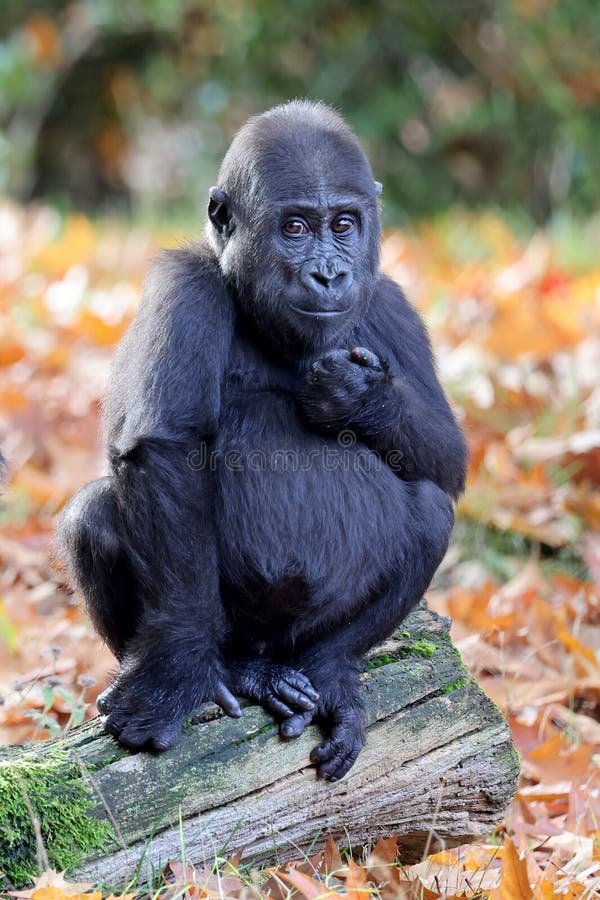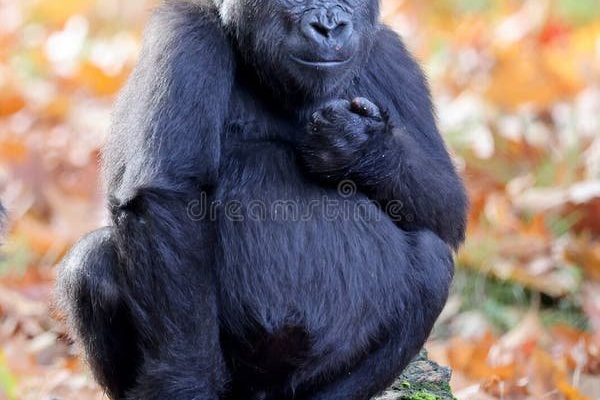
Now, you might be wondering why a large primate matters in the grand scheme of nature. Let’s take a closer look at how these incredible creatures impact their environment, contribute to biodiversity, and interact with the other plants and animals around them. Grab a cup of your favorite beverage, and let’s dive into the leafy world of the Western Gorilla!
Understanding the Western Gorilla
The Western Gorilla, scientifically known as *Gorilla gorilla*, can be found mainly in the dense forests of West and Central Africa. They come in two sub-species: the Western Lowland Gorilla and the Cross River Gorilla. These gorillas are known for their robust build, long arms, and distinctive facial features. Despite their imposing size, they are typically gentle, social creatures that live in family groups, often led by a dominant male known as a silverback.
These gorillas primarily eat leaves, fruits, and stems, making them herbivores. Their diet plays a significant role in the ecosystem, and here’s why: as they munch their way through the forest, they inadvertently help in seed dispersal. Think of them as nature’s delivery service—when they eat fruits like mangoes or figs, they consume the seeds and later excrete them elsewhere, helping new plants grow. It’s a win-win for both the gorillas and the forest!
The Role of Western Gorillas in Seed Dispersal
When Western Gorillas roam through their habitat, they contribute significantly to **seed dispersal**. This process is crucial for the regeneration of plant species in their ecosystem. As these gorillas eat fruits, they often consume seeds that pass through their digestive tract unharmed. Once the gorillas move to a new location or find a comfy spot to rest, they deposit those seeds in their droppings.
This seed-dispersing behavior introduces genetic diversity among the plants, ensuring a healthy and resilient forest. You might think of it like planting a garden—without different plants, the garden wouldn’t thrive. The gorillas help foster a vibrant forest where a variety of species can flourish.
Additionally, the presence of these gorillas can influence the types of plants that grow. For instance, if they favor certain fruits or leaves, those species may dominate the area, which can shape the entire forest’s ecosystem. So, you see, these gentle giants are not just munching away; they’re also sculpting their environment!
Impact on Biodiversity
Biodiversity is essential for a healthy ecosystem, and Western Gorillas play a vital part in it. Their feeding habits not only help in seed dispersal but also contribute to the variety of life in their habitat. By consuming a broad range of plants, they help control plant populations, which can prevent any one species from overwhelming the ecosystem.
Imagine a garden where one flower grows too tall and blocks out the sunlight for others—it wouldn’t be very pretty, right? Similarly, if one plant species dominates the forest, it can reduce the variety of other plants, which in turn affects the animals that rely on them for food and shelter.
Additionally, when gorillas interact with their environment, they create pathways throughout the forest. This allows other animals to move freely and access resources like water and food. It’s a bit like how sidewalks and roads make it easier for people to navigate a city—gorillas help keep the pathways open for many other species.
Western Gorillas and Ecological Balance
Ecological balance is all about maintaining a healthy environment where different species coexist. The Western Gorilla plays a pivotal role in this balance. Their grazing habits help limit the growth of certain plants, which can otherwise overpopulate and disrupt the habitat. This control is vital because it allows sunlight to penetrate the forest floor, letting new plants sprout and thrive.
Moreover, gorillas provide food for predators and scavengers. When they die—often due to natural causes—they become a source of nourishment for other animals in the ecosystem. This nutrient recycling is crucial for the health of the forest. Just like in any community, when someone passes on, they leave behind something valuable, and in the case of gorillas, that’s nutrients that support life for other species.
Threats to the Western Gorilla and Their Ecosystem
Unfortunately, Western Gorillas face numerous threats that jeopardize their existence and, consequently, the health of their ecosystems. **Habitat destruction**, primarily due to logging and agriculture, is a major concern. As forests are cleared, gorillas lose their homes and the resources they depend on. This not only affects the gorillas but also the entire ecosystem, as the balance they help maintain goes awry.
Additionally, poaching poses a significant threat. Some people hunt gorillas for bushmeat or for the illegal pet trade. This not only reduces their population but also disrupts their social structures, which can lead to further ecological imbalance.
Finally, diseases like Ebola have had devastating effects on gorilla populations. When outbreaks occur, they can wipe out entire communities of these animals, leading to a decline in their numbers and, ultimately, a weaker ecosystem.
Conservation Efforts
Conservationists are working hard to protect the Western Gorilla and their habitat. Various organizations are focused on raising awareness and implementing strategies to combat poaching and habitat destruction. Some initiatives include establishing protected areas where gorillas can live safely and unharmed, as well as promoting eco-tourism, which provides local communities with financial incentives to preserve their forests.
Community education is another critical facet of conservation. By teaching locals about the importance of gorillas in their ecosystem, conservationists hope to foster a sense of pride and responsibility. This way, people can see that protecting these animals is not just good for gorillas; it’s also vital for the health of their forests and the well-being of their communities. After all, gorillas are integral to the local culture and environment.
The Future of Western Gorillas and Their Ecosystem
Looking ahead, the role of the Western Gorilla in its ecosystem remains as crucial as ever. As long as these creatures thrive, they will continue to play a significant role in maintaining forest health and biodiversity. However, protecting them requires ongoing commitment and awareness.
Restoring degraded habitats and enforcing stricter laws against poaching are steps in the right direction. We also need to foster a global effort to raise awareness about the plight of these magnificent creatures. When people understand their importance, they’re more likely to support conservation efforts and advocate for policies that safeguard the future of gorillas and their ecosystems.
In conclusion, the Western Gorilla is more than just a fascinating animal; it’s an essential component of its ecosystem. By protecting them, we’re not only saving a remarkable species but also preserving the intricate balance of life in the forests they call home. Let’s work together to ensure that future generations can enjoy the beauty and wonder of the Western Gorilla in the wild.

